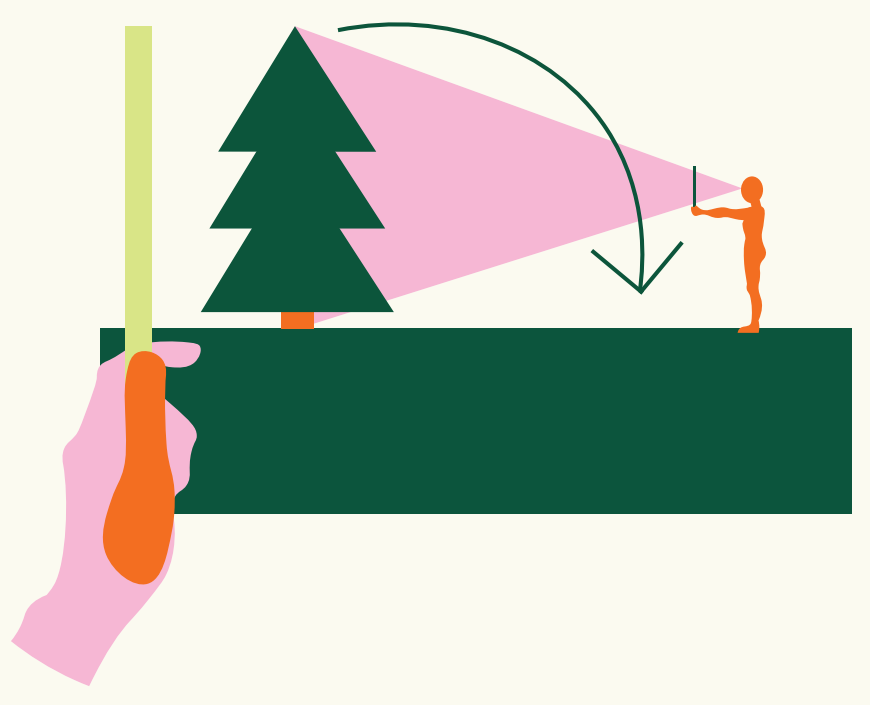A felled tree like this one can tell us quite a lot about our cultural heritage. In the bygone days a “lumber-jack” felled a massive pine for timber. In the felled tree he found some rot. Still he made holes in the upper parts of the tree just to find out that “all that glitters is not gold”. Such wasted work!
So this massive tree was left to dry and rot, decay for the future generation’s amazement. Notice the beautifully twining and twisting trunks and branches of the surrounding dead pines. Only nature can create such a lovely treat for our eyes!
You can see a lot of traces of ancient forest fires along the footpath. There are traces of soot and ember in the lower parts of dead trees, stumps and even live trees.

Estimating the length of a tree
Trees grow at different speed in different parts of our country. Both climate and richness in soil nutrients affect the rate of growth and the variety of tree species in a forest. In northern forests, especially in spruce forests, snow accumulation, called tykky, tend to bother trees during winterns.
The snow accumulates on the tops of the trees in thick layers and it sometimes damage even fully grown trees. That is why northern spruces have more slender tops than southern spruces.
There are different ways to estimate the length of a growing tree. One of the most popular methods is shown in the adjoining picture. Try to estimate the average length of the trees surrounding you!
